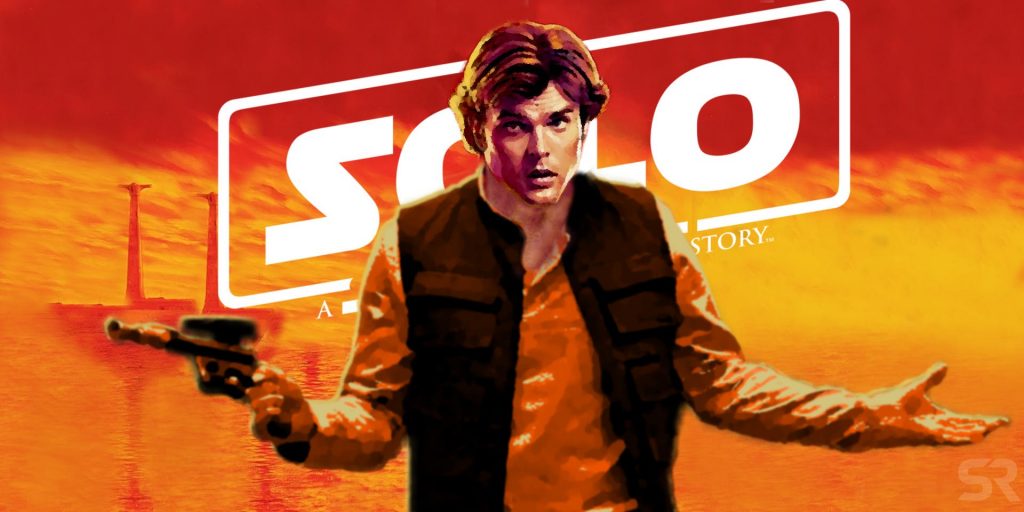
An heirloom is an object which connects. It links generations. Mother and daughter. Grandfather and grandson. Often even further back and further forward in time. I think most often of a necklace given to me when my grandmother died. She’d worn it every day. I remember it glinting behind blouses, falling onto plates as she leaned over to set a table, resting on the generous chest I would also inherit. I imagine when my grandfather gave it to her, this religious symbol with little diamonds. So when I took up her talisman – I too wear it everyday – it was like having a piece of her, of him and of our greater group. I can conjure her and the things that this little shape conjured for her, or at least, that I imagine it did. In some sense, they’re with me all the time, as this everyday object becomes a part of my person as it did for my grandmother.
A tactile bridge to the abstract and the lost, an heirloom condenses individuals, stories, groups. When the heirloom is also a talisman, it increases the intensity of all this and adds a sense of magic and a feeling of shared secrets. The heirloom-talisman given and accepted also acts as a mutual claiming. That’s what heritage does; it inscribes you in a genealogy, a figurative or literal family line. An heir, according to Misters Merriam, Merriam and Webster (yes, there were two Merriams), is “a person legally entitled to the property or rank of another on that person’s death” or “a person who inherits and continues the work of a predecessor.” It defines a legal relationship and status, an identity, and an activity that really has the quality of a mission rather than a pastime. The definition of loom I might leave alone for now, as that’s a linguistics diatribe that could go on for a while. (Loom as a verb, loom as a noun, loom in Old English). Let’s just say it’s a tool. So an heirloom is a tool of heritage. I think of all objects of emotional significance that pass from old hands to young ones with their affective powers still intact as having functions similar to that of the heirloom.
Here’s the part where I talk about Star Wars. (Admit it, you were worried the whole post was going to be about linguistics and my grandmother). The Star Wars universe is vast – more vast even than I realized – and initially, I thought it would have a number of objects of emotional significance that link or at least traverse its many plotlines. Though, given the number of orphans who populate its stories, perhaps I should have been less surprised to find markedly few. Maybe the Millennium Falcon. Perhaps the Tico sisters’ necklaces which create a material reference for their strong bond. But, these smack more of simple family talismans than objects exemplified for what they do and mean as they pass from one set of hands to another.  Luke/Anakin/Rey’s lightsaber is the best example. We see it first (first? Oh Sith Lord, in what order do the kids these days see these movies?) in the OG, Star Wars Episode IV: A New Hope. A boy with daddy issues, much in need of a sense of connection to his familial past, is bequeathed his father’s Jedi symbol/tool/talisman and, along with it, a story and a mission. This heirloom gives order to his life at a moment when he’s about to need it most. And, lest you forget to pay attention to it, this light-up sword which has now spawned several generations of children with poked eyes is one of the only physical objects across the Star Wars universe that is significant both emotionally and to the plot – unless you reduce R2D2 pregnant with Death Star plans or Han Solo in carbonite to things, which I don’t. This is one powerful little object, but I’m most interested in how it creates lineage and, in the process, becomes a reference for temporal order. It links Luke to his father and Episodes IV through VI to Episodes I through III. It brings Rey into that Jedi family, readying her to become the last Jedi, and it puts this most recent trio of films after the 1970s classics. It has intra- and extra-diegetic power, forging order in the major genealogical line within, throughout and outside the stories, most importantly helping the viewer to grip and be gripped by the timeline of the films.
Luke/Anakin/Rey’s lightsaber is the best example. We see it first (first? Oh Sith Lord, in what order do the kids these days see these movies?) in the OG, Star Wars Episode IV: A New Hope. A boy with daddy issues, much in need of a sense of connection to his familial past, is bequeathed his father’s Jedi symbol/tool/talisman and, along with it, a story and a mission. This heirloom gives order to his life at a moment when he’s about to need it most. And, lest you forget to pay attention to it, this light-up sword which has now spawned several generations of children with poked eyes is one of the only physical objects across the Star Wars universe that is significant both emotionally and to the plot – unless you reduce R2D2 pregnant with Death Star plans or Han Solo in carbonite to things, which I don’t. This is one powerful little object, but I’m most interested in how it creates lineage and, in the process, becomes a reference for temporal order. It links Luke to his father and Episodes IV through VI to Episodes I through III. It brings Rey into that Jedi family, readying her to become the last Jedi, and it puts this most recent trio of films after the 1970s classics. It has intra- and extra-diegetic power, forging order in the major genealogical line within, throughout and outside the stories, most importantly helping the viewer to grip and be gripped by the timeline of the films.
A number of the Easter eggs from the new Solo: A Star Wars Story share a lot with these emotionally-charged objects I’ve been describing. They tie together people and story lines across time and do so by being passed from one character to another and possessing secret significance. The Millennium Falcon, again, sort of. 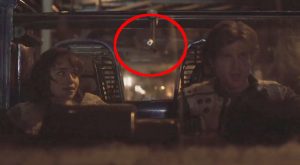 A set of gold dice that doesn’t seem to bring Qi’ra much luck but does contain enough emotional significance and presumed magic that Han still has it at least 10 years later in Episode IV. And Han’s blaster. Han’s blaster, for me, is an Easter egg-heirloom. In the OGs, it’s just a gun. (Nobody get their panties in a twist. There’s no shortage of essays and comments against the idea that a gun is just a gun. Not that Han, in either his Harrison Ford or Alden Ehrenreich renditions, needs any more proof of testosterone, proxy or otherwise).
A set of gold dice that doesn’t seem to bring Qi’ra much luck but does contain enough emotional significance and presumed magic that Han still has it at least 10 years later in Episode IV. And Han’s blaster. Han’s blaster, for me, is an Easter egg-heirloom. In the OGs, it’s just a gun. (Nobody get their panties in a twist. There’s no shortage of essays and comments against the idea that a gun is just a gun. Not that Han, in either his Harrison Ford or Alden Ehrenreich renditions, needs any more proof of testosterone, proxy or otherwise). 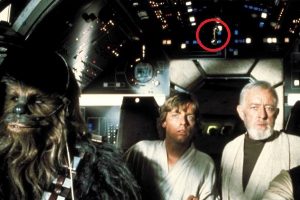 In Solo, both the character and his beloved accoutrement get a backstory. He receives it from a replacement father character, Captain Beckett. In fact, it’s a part of this man’s rifle, his character’s weapon/talisman. (Oh my God, please someone write a paper on the weapon-talisman). He disassembles it and gives a portion that somehow is a blaster to Han. This thing which has obsessed fans since the internet was invented basically to talk about who shot first (obviously not Greedo because I imagine trigger pulling is a challenge with those fingers) now symbolizes a narrative that pulls Han into a family of sorts. It gives him a father figure and acts as his official induction into this band and the greater world of smugglers. The genealogy the blaster reinforces is two-fold because it also serves to connect and order the films.
In Solo, both the character and his beloved accoutrement get a backstory. He receives it from a replacement father character, Captain Beckett. In fact, it’s a part of this man’s rifle, his character’s weapon/talisman. (Oh my God, please someone write a paper on the weapon-talisman). He disassembles it and gives a portion that somehow is a blaster to Han. This thing which has obsessed fans since the internet was invented basically to talk about who shot first (obviously not Greedo because I imagine trigger pulling is a challenge with those fingers) now symbolizes a narrative that pulls Han into a family of sorts. It gives him a father figure and acts as his official induction into this band and the greater world of smugglers. The genealogy the blaster reinforces is two-fold because it also serves to connect and order the films.
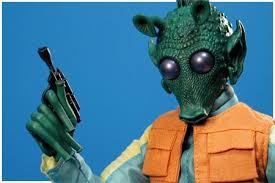
But, the affective power of the blaster is felt not just by Han, but by the spectator as well. Its quality as an Easter egg – a wink to the audience, a conspiratorial congratulations to the canny viewer – redoubles these feelings of connection and significance because it capitalizes on a sense of shared secrets. To me, Easter eggs work a lot like objects of heritage because they condense an emotional tie and signal one’s status as a member of a type of family. You have to be in the group, in the know, to even notice the object at all and furthermore to value it as something of special significance. The viewer astute enough to catch it shares in a secret heritage. It draws us in affectively and makes us feel part of the Star Wars universe and its various genealogies. We sympathize with Han, and, holding one of his secrets, we even empathize with the protagonist to a greater degree. (We always empathize with a protagonist. That’s how movies work).
Of course, there’s a slightly more insidious view on all this which has to do with marketing and merchandise, with getting people to watch more, buy more, grow more obsessed with all of Star Wars’s secret pockets of story, scour the internet for content, and generate their own crackpot theories and overwrought analyses (who would do that?). The Easter egg in general, but particularly this Easter egg which is also blatantly a heritage object for our beloved hero, can simulate depth in the storyline by fomenting a sense of complicity and increased identification in the viewer. Well, I’ve now destroyed my self-congratulatory moment of “clever girl, you noticed the blaster Easter egg” by reclassifying it as a very good marketing ploy, a shallow bid for my money and allegiance masquerading as a sign of narrative complexity. But, I give in, and honestly, tell me you don’t want one of these.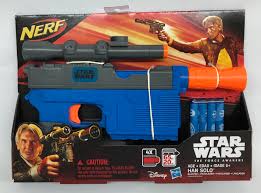

grip and be gripped <3
R2D2 pregnant with death star plans <3
did I mention I love your writing 😉